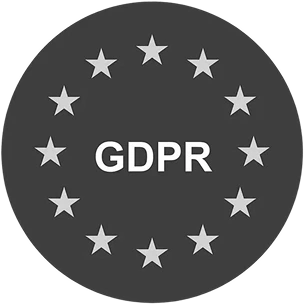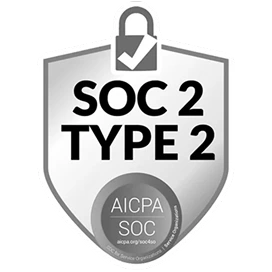In today's episode, we talk to Jeffery King and Travis Brace, Community Advocate and Customer Support Manager at Grindr, about how they've created a tagging taxonomy that allows them to quantify issues, keeping customer feedback relevant in wider department conversations.
Travis takes us through the details of what their tagging structure now looks like after a huge revamp in 2022, with multiple layers of granularity allowing for both broad-level and more specific reporting.
Jeffery explains how a customer-focused feedback culture can look in practice, with customer feedback being a driver, not an afterthought, for wider team strategies.
Plus, hear some real life examples of how this approach has helped teams and customers at Grindr, as well as how other organizations can look to be more customer focused in their own set-ups.
Watch the full episode to hear tips on how you can optimize your tagging taxonomy, or read the highlights below 👇
How do you encourage a customer-feedback focused culture within the wider business day-to-day?
"I try to elevate customer concerns publicly. We have an all hands where sometimes I might speak about an issue that I think might really be of concern for our user base, that way everybody's hearing it at once.
Having this forum means that if somebody has an idea, I'm able to go back and say, "Hey, well people are actually talking about this in some of our feedback channels, here's what some of that feedback looks like", so that people are literally having our community's feedback as they're thinking through their strategies.
In previous companies, it tends to be that a bunch of people get in a room, they make a decision, they wait to see if the customers are gonna like it, but at Grindr we're getting that feedback from the very start and having that help shape whatever it is we're trying to do." - Jeffery King
"The kind of angle of collaboration that I'm taking is almost on the other side of the fence where I'm doing a lot of proactive work with product before features are rolling out.
I'm often playing the role of 'voice of the community' in product planning meetings, or right as we're about to launch something new, I'll sit down with the PMs and offer a customer perspective of "Users might hate that, users will love this, this button's confusing."
Then naturally as a natural follow up to that process after a product has been launched and we start hearing about that feedback from the community, I'll work with our product managers and engineers to feed the direct line of real-time feedback that we're hearing about recently launched features or recently updated parts of the product, et cetera." - Travis Brace
What does your new tagging set-up look like in Zendesk?
"When I started, the tags were an absolute mess. I mean, a dumpster fire. The tags that were being surfaced as being most used were the words "the" like t h e and "you" y o u. How would that help us in any way as far as ticket insights go?
I love tags. I think that they are so powerful as a primary way of tracking insights and trends and being able to report those back to product. We rely super heavily on macros as well because of our partnership with the BPO, so we wanna make sure that we really have provided all of our frontline associates with like the exact language that they need to answer any case.
We have a really robust system of Macros and each of those macros has three different tag types on it:
The first type is what we call "category tags", and this is our widest bucket with the fewest number of tags included under this umbrella.
Category tags are the biggest bucket or way that we can chop up ticket insights, for example billing or payments issues, account and profile management issues, ban appeals and bug reports.
Having these broad-level tags allows us to identify the biggest top-line areas where we're seeing issues raised, to then filter down the insights from there.
One layer down underneath category tags, we have what I call "topic tags".
These are a layer of granularity below the category tags, for example an account and profile management issue might be the category tag, then refund might be the topic tag for someone requesting a refund for various different reasons.
The third kind of tier of tag that we have, we call "macro tags". And these are the most straightforward.
They're also the most granular level of reporting that we have in our tag ecosystem. These are unique tags that are one-to-one for each macro.
This allows us to report to Product on exactly how many times we have helped people with a specific issue.
This approach allows us to be super flexible with our data and reporting and divvy up the insights in different ways that might be relevant to different stakeholders." - Travis Brace
How have you been able to influence the product roadmap with support insights?
"This does happen quite a bit, which is very exciting and exactly what you want when you have all these insights in a highly collaborative feedback culture.
One recent example that I have is we recently launched a product called Boost, which allows a user to bump their profile up in the grid so that it stands out to more people that are within your radius and helps to hopefully foster some more connections.
(Shout out to Boost. It's great if you're listening and you're into that kind of thing and you're a Grindr user, boost your profile. It's really fun.)
But we also have a product called Day Pass, which allows our users to essentially purchase a premium subscription tier for 24 hours, another really cool feature.
We started to see tickets in the wake of both of these releases that had both Day Pass and Boost topic tags on them. So we started looking into those tickets and the insights that we found were that folks were getting them confused with each other.
Without really a second thought, we were able to partner with product and marketing and some other stakeholders just to like ensure that the placement and visual identity of those two offerings and the tooltip copy explaining what those two offerings were, were sufficiently separated and unique from one another.
This is one of those small changes that then can have great impacts to revenue.
We've seen a lot of success with Boost because now folks know exactly what it is that they're signing up for and exactly what it is that they're purchasing.
It just shows the power of tag insights to see that just tweaking something a little bit based on user feedback could ultimately make us more money.
I can't speak highly enough about leveraging tags within your organization." - Travis Brace
Music: Savour The Moment by Shane Ivers - https://www.silvermansound.com
.svg)




.svg)





